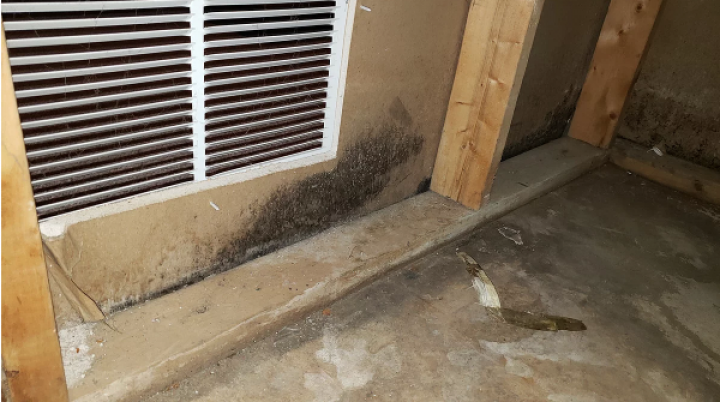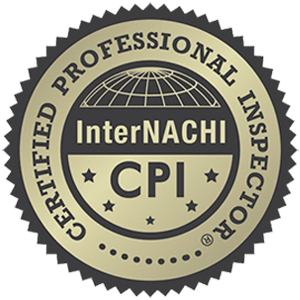
A home inspection is an objective visual examination of the physical structure and systems of a house, from the roof to the foundation. We want to provide information to make the best decision for you and your family.
The standard home inspector’s report will cover the condition of the home’s heating system (temperature permitting); central air conditioning system (temperature permitting); interior and exterior plumbing and electrical systems; the roof, attic and visible insulation; walls, ceilings, floors, windows and doors; the foundation, basement and structural components.
The International Association of Home Inspectors (InterNACHI) publishes a Standards of Practice and Code of Ethics that outlines the minimum standards for a home inspection. As a home inspection company that strives for excellence, we go well beyond these minimum standards.
It depends who you hire. Some home inspection companies may upcharge based on the location and/or selling price of the home. In addition, many home inspection companies advertise the national average instead of their average.
We use a home inspection pricing calculator and price based on:
We strongly advise not basing your home inspection based on cost. Saving $50 on a home inspection may cost you more after you move in!
It depends on the size and condition of the home. A typical home inspection should take 2-2.5 hours for a condo, and 3 – 3.5 hours for a townhouse and 3 – 4 hours for a single family home.
Yes, at the end of the inspection. This allows the Inspector to focus on the inspection without distractions, but also being mindful of your time – 45 minutes at the property vs 3-4 hours. During the walkthrough the Inspector will review all issues/concerns/deficiencies, answer any questions you have, and teach you about home maintenance.
No. A professional home inspection is an examination of the current condition of a house. It is not an appraisal, which determines market value. It is not a municipal inspection, which verifies local code compliance. A home inspector, therefore, will not pass or fail a house, but rather describe its physical condition and indicate what components and systems may need major repair or replacement.
No house is perfect. If the inspector identifies problems, it doesn’t mean you should or shouldn’t buy the house, only that you will know in advance what to expect.
Definitely. Home inspectors are trained to look for and identify current and potential issues/concerns/deficiencies. In addition, you can complete your home purchase with confidence. You’ll have learned many things about your new home from the inspector’s written report, and will have that information for future reference.
The state of Maryland does not require home inspectors to walk the roof, but we make our best effort to do so depending on safety, height, roof pitch, roof conditions, and weather conditions.
If the conditions prevent the Inspector from mounting the roof, we will use a drone to inspect and take pictures.
We do our best to email a full color PDF document with pictures within 24 hours.
As a small business we would appreciate a check. But we can email you an invoice so you can pay online by credit card.
Contact a professional to perform a mold inspection to determine if there are other areas in your home that have mold. After the inspection, have a mold remediator/restoration company properly remove/treat the mold. Check our Preferred Vendors for a trusted contractor. Contact us to schedule a mold inspection!
Moisture in your home – a small leak from your roof in your attic, a dripping valve under a sink, clogged condensate line in your AC, moisture seeping into your basement, etc.
Contact a professional to conduct a mold test. You can also have a mold inspection performed to determine if there are other areas in your home that have mold.
Common symptoms include runny nose, sneezing, coughing, congestion, itchy eyes, headaches, and asthma-like symptoms. There can also be long-term effects such as fatigue, rashes, joint pain, pneumonia, etc.
Yes, but…home test kits leave a large margin for error – incorrect use of kit, inaccurate testing/collection, etc. Mold testing is best left for the professionals who use high end equipment to properly collect and analyze the samples.
Yes, but…again, for the health of you and your family it is better left to professionals who will treat the mold thoroughly and properly.
Moisture prevention/control. Mold cannot grow without moisture. This includes water penetration from the exterior, drains, valves, condensate line, roof, basement, etc. Contact us to schedule a consultation!
Here is an example of mold in a home during one of our home inspections. You can see several areas across the drywall that are affected.

Due to the danger of radon, the EPA (Environmental Protection Agency) has made increased efforts to educate the public.
Radon is a colorless, tasteless, odorless, radioactive gas emitted from the decay of uranium in the ground. It occurs naturally and is produced by the breakdown of uranium in soil, rock, and water. It can also dissolve into our water supply.
Radon is the second leading cause of lung cancer in the United States, resulting in 15,000 to 22,000 deaths per year. The more radon you are exposed to, and the longer the exposure, the greater the risk of eventually developing lung cancer.
Yes, but…having a professional who is educated and using high tech equipment will provide you the most accurate results with proper set up and analysis of the results. Contact us to schedule a radon test!
Radon testing is recommended every two to three years by the EPA due to the changing levels of radon over time.
Contact a radon mitigation company who can provide an assessment and recommend a course of action. Typically a radon mitigation system is installed. Check our Preferred Vendors for a trusted contractor.
The U.S. Environmental Protection Agency’s (EPA) rules that protect public drinking water systems do not apply to individual water systems, such as privately owned wells. Asan individual water system owner, it is up to you to make sure that your water is safe to drink.
The only way to tell if your drinking water is safe is by having it tested at a certified laboratory. Harmful bacteria, parasites, and viruses are invisible to the naked eye, so water which looks and tastes good may not necessarily be safe to drink. These microbes can exist in surface and groundwater supplies, and can cause immediate sickness in humans if not properly treated.
Certain chemical contaminants that are sometimes found in a water source can cause long term health problems that take years to develop. Frequent water testing will identify unsafe water and ensure that the treatment system is treating the water to a satisfactory level.
Total Coliforms
Coliform bacteria are microbes found in the digestive systems of warm-blooded animals, in soil, on plants, and in surface water. These microbes typically do not make you sick; however, because microbes that do cause disease are hard to test for in the water, “total coliforms” are tested instead. If the total coliform count is high, then it is very possible that harmful germs like viruses, bacteria, and parasites might also be found in the water.
Fecal Coliforms / Escherichia coli (E. coli)
Fecal coliform bacteria are a specific kind of total coliform. The feces (or stool) and digestive systems of humans and warm-blooded animals contain millions of fecal coliforms. E. coli is part of the fecal coliform group and may be tested for by itself. Fecal coliforms and E. coli are usually harmless. However, a positive test may mean that feces and harmful germs have found their way into your water system. These harmful germs can cause diarrhea, dysentery, and hepatitis. It is important not to confuse the test for the common and usually harmless WQI E. coli with a test for the more dangerous germ E. coli O157:H7.
pH
The pH level tells you how acidic or basic your water is. The pH level of the water can change how your water looks and tastes. If the pH of your water is too low or too high, it could damage your pipes, cause heavy metals like lead to leak out of the pipes into the water, and eventually make you sick.
The CDC recommends having well water tested every year.
We always recommend professionals perform tests that directly affect your health. If you feel comfortable enough to perform your own test there are many kits on the market. Do the research and purchase a reputable, well reviewed kit.
At Thin Line Home Inspections, our job isn’t complete until you feel comfortable and all of your questions and concerns are answered.
